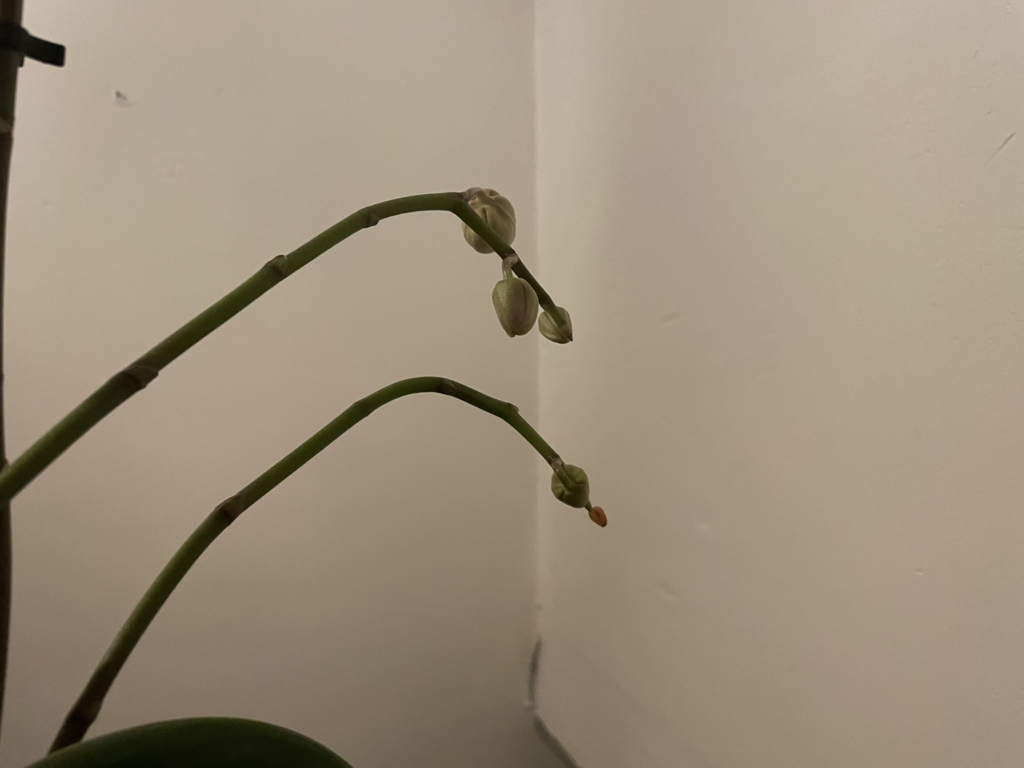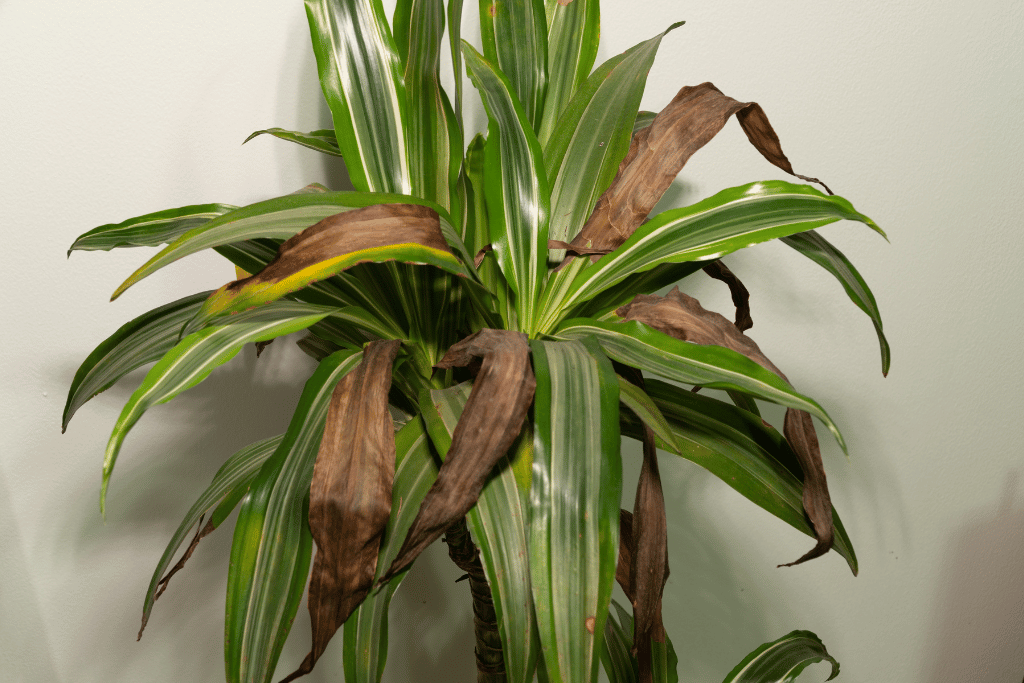
Coming from tropical forests, orchids are lovely plants which produce beautiful flowers and are a popular houseplant to keep. They are admired year-round, even when not in bloom – due to their beautiful, lush green leaves. Flowers of an orchid are produced on their spikes, and it’s desirable to get many of these on an orchid. So, if you’re unsure how to get multiple stems on an orchid, keep reading!
Due to their natural environment, orchids can be picky with their care. Many factors come into play when trying to cultivate orchids, such as light, temperature, humidity and watering. Too much water? Crown rot, or rotted roots. Too much light? Sunburnt leaves. Not enough humidity? A sad orchid.
Of course, no grower wants this – so it’s essential to do our research into orchids to ensure that we can recreate their favorable conditions and push as much growth out of them, including new flower spikes. You’ll find that some species of orchids are able to produce numerous flower spikes or even rebloom from the same spike, while some may not. There are many intricacies to orchids that you can learn over time and with experience, but let’s explore some of them now and how we can manipulate them to produce more flower spikes!

How to Get Multiple Stems on an Orchid
As mentioned, there are multiple ways you can influence the growth of multiple stems. Some are a bit more complicated than others, while some are simply due to the nature of said orchid! Don’t get discouraged if these methods don’t work immediately; keep trying!
Orchid Species
The most important factor in getting multiple stems on your orchid is choosing one that can produce multiple spikes! Some species aren’t able to do this, such as the Phalaenopsis orchid, which can only produce one to two flower spikes per season. Compare this to the equistres orchid of the Phalaenopsis genus, and you’ll find that they can produce many more spikes with minimal effort!
So, if you’re looking for an orchid that can produce multiple spikes with minimal hassle, it might look like the equistres species would suit you well! However, different species of orchids will have additional care requirements, so make sure you can take care of these orchids before you buy them for yourself.
Suitable Light Levels
Without a doubt, light is one of the most important factors when caring for an orchid. Insufficient light means that your orchids won’t produce flowers or may only produce a small number of flowers. They won’t be able to produce their energy, and in turn, they’ll suffer over time.
Symptoms of insufficient light for orchids include unusually slow growth, a lack of flowers, long and skinny or short and stumpy leaves, and finally, a dark green color on the leaves. This can be slightly harder to diagnose, especially for beginners – as green growth is usually a very good sign that a plant is doing well. However, the orchid is trying to make up for the insufficient light with chlorophyll, which suggests the orchid is stressed.
If your orchid isn’t receiving enough light, it won’t be able to put out multiple flower spikes. So, to prevent this, we’ll need to get it into a position with a good source of light. A general rule of thumb is that they should receive around six to nine hours of light per day, though some orchid species might require a few more hours or slightly more intense sunlight.
My orchids are located on a north-facing windowsill, where they thrive and get the perfect amount of light. They flower beautifully consistently, so why not try this yourself? You may find that orchids on south-facing windowsills may suffer and become sunburnt due to the intensity of the sunlight, but it’s always best to experiment yourself. Many growers like to opt for an east-facing or west-facing windowsill, although beware with east-facing windows that the sunlight might be a bit more intense in the morning.
Prevention
It might be worth investing in grow lights if you have nowhere in your home suitable for your orchids. These can be hardcore for people just getting into caring for orchids, but if you have no other way of providing the light, you might be required to get some. Depending on the specifications of the lights, they are typically relatively cheap to run, contrary to what most people think. As long as you have some natural light to supplement your orchids with, you should be able to keep the costs to a minimum!
Direct Sunlight
The one thing you shouldn’t do is leave your orchids in direct sunlight. Long periods of exposure to direct sunlight will stress your orchid out and can cause symptoms such as the leaves turning a slight white or red color. However, a reddish color seems to be more common, especially for Phalaenopsis orchids.

Temperature
In nature, plants will start to break out of their dormancy and throw out their flowers once the temperatures warm up or even cool down. Some like to flower in the colder months in autumn and winter, while some stick traditionally to spring and summer. Orchids like to bloom in the cooler months of winter.
For orchids, 12-23 degrees is an ideal temperature for them. Drastic temperature drops aren’t tolerated, and orchids will punish you for it! They aren’t used to it in their natural environment, so they definitely won’t be able to handle it in a home. Signs that the temperature has damaged your orchid usually include the whitening of leaves and stems, which will eventually turn brown as they continue to die.
With all this in mind, the temperature can actually be used to induce flowering in an orchid. At night, your orchid should be towards the lower end of temperatures, which will tell the orchid that it’s time to start flowering instead of putting out vegetative growth, such as new leaves. This can either happen naturally or artificially – such as by keeping a window open at night or leaving the fan on. Just make sure it’s not too cold for you or your orchid!
Day and Night
Both temperature and the day and night cycle play into the flowering of orchids and essentially any plant. Plants notice when temperatures drop and the days become shorter, as this is usually a sign for them to enter dormancy as winter is coming. Orchids notice this too, but they don’t go through a dormancy period. Instead, they’ll flower.
If you’re keeping your orchids under artificial light, such as grow lights, it might be a good idea to tone down the amount of light you are giving your orchid, which can help it to start flowering.
Feeding Your Plants
No one likes to go hungry – especially not plants. Orchids need regular fertilizing. Otherwise, they won’t be able to put out those lovely green leaves or beautiful blooms we associate them with. Nutrients are essential for any plant, especially those that aren’t planted in the ground and kept in pots. If we want to encourage the growth of multiple stems, we must first ensure that the orchid is healthy and receiving enough nutrients.
The essential nutrients an orchid will need for flowering are nitrogen, phosphorus, potassium and magnesium. These are needed throughout the growing season and from spring to fall, with many growers liking to apply fertilizer once a month or more frequently.
When picking which fertilizer to use, it’s critical that you get one that’s suitable for orchids. Orchids won’t be able to handle most regular fertilizers as their contents may be too concentrated, which could burn the roots of the orchid, leading to its death. Orchid fertilizers will typically have a balanced amount of nitrogen, phosphorous and potassium instead of one ratio being higher.
To use your fertilizer, make sure that you follow the instructions on the packaging and dilute it as to how the manufacturer specifies it.
If you think that you have overfertilized your orchid, it’s essential that you try to remove as much fertilizer from the soil as possible. To do this, you can soak your orchid’s soil under water for a few minutes to try and drain as much out as possible, or water it very thoroughly. This should help drain as much excess fertilizer out of the soil as possible – you should hold off on fertilizing for a while to make sure the orchid recovers.

Final Thoughts
Overall, there are many factors that come into play when we are trying to get the growth of multiple stems on our orchids. Light, temperature, the day and night cycle, fertilizer and species all determine the blooming of flowers, so make sure that you research all of the requirements of your orchid before getting one!
Frequently Asked Questions (FAQ)
How do you multiply an orchid stem?
Orchids are propagated mainly through offshoots instead of seed, as the seeds will require very specific conditions and even particular fungi in the soil to germinate the seed. You can still grow orchids from seed, though it may require a bit more effort! To multiply the orchid stem, you should snip a stem off the orchid, placing it horizontally in a tray of damp sphagnum moss. It can then be covered with a plastic bag to retain humidity; within a few months, you might see that a few new leaves are formed.
Are orchids able to have more than one flower spike?
Yes! There are quite a few species of orchids which are able to produce more than one flower spike. However, the most common orchids (Phalaenopsis/Moth) orchids only produce one or two flower spikes at a time. Some species will throw out double spikes, or spikes that will branch into multiple different flower groups.
How long do orchids flower for?
The Phalaenopsis orchid will typically flower for around three months if given the right conditions, while some other orchids, such as Dendrobiums, will flower for approximately six weeks. Paphiopedilum last about 6-8 weeks, Oncidium last about 4-6 weeks and being the shortest, Cattleya lasts around 7-21 days.
Why hasn’t my orchid bloomed?
If you’ve noticed that your orchid hasn’t bloomed for a few years, it could be due to a few different reasons. It’s usually due to either insufficient light, not enough or too much water, pests and disease, repotting at the wrong time or a lack of nutrients. These are all problems that can be fixed relatively easily, especially if you follow the steps listed in the article. Some species of orchids may also only bloom once per year, so if you’ve already had a bloom, it’s likely you won’t get one until next year, unfortunately!



